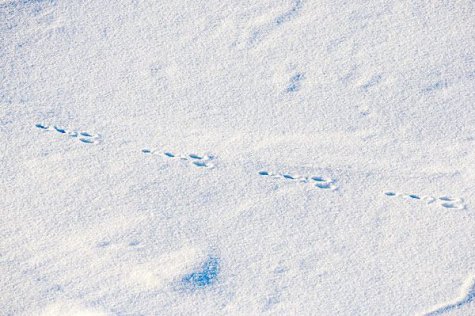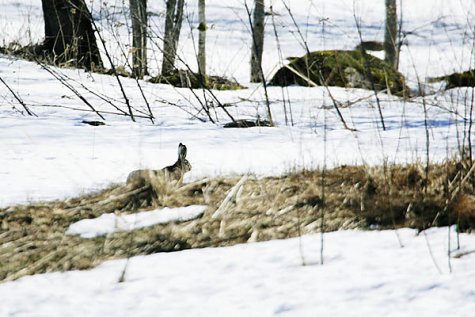About the mountain hare
Photos: Sven Zacek and Arne Ader
Translation: Liis
Hare tracks.
|
Mountain hare |
Valgejänes |
Lepus timidus |
Freshly fallen snow soon carries new track patterns. The tracks from the aspen nibbler are easy to recognise: two slightly larger holes from the hind paws side by side, and the smaller marks from the two forepaws in a row after each other.
Mountain hares are original settlers and forest dwellers in Estonia, having arrived here after the Ice Age. The brown hare scuttles around here only since a few hundred years back, and is more a creature of open landscapes.
The mountain hare has become scarce. In winter it has a white fur, with only black eartips. A perfect camouflage for this winter, but no good to run around like that in the forest when the ground is bare and black.
Mountain hares are original settlers and forest dwellers in Estonia, having arrived here after the Ice Age. The brown hare scuttles around here only since a few hundred years back, and is more a creature of open landscapes.
The mountain hare has become scarce. In winter it has a white fur, with only black eartips. A perfect camouflage for this winter, but no good to run around like that in the forest when the ground is bare and black.
It lives solitarily, and moves in a very small territory. Already in autumn it adapts to a diet of thin twigs from trees and bushes and the bark of trees (the hare can’t digest wood). It digs for cowberry and bilberry stalks under the snow, also for heather. Its digestion is particularly effective: the first round of excrements is eaten again, the organism takes up the remaining nourishment and only after that we can find the hare droppings.
The mountain hare is a coveted catch for all predators – lynxes, wolves, foxes, golden eagles ... so forest life is safer, and in a small territory all hiding places that can be quickly reached are known.
.
Mountain hare.
From March onwards the mountain hare gradually starts to change its fur, beginning from the head.










